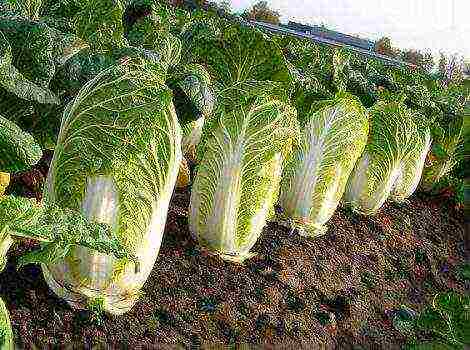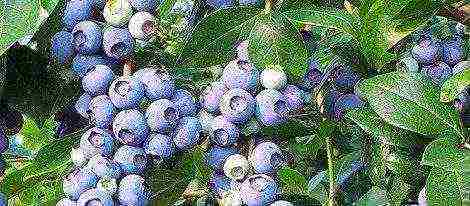Content
- 1 Planting barberry at home
- 2 Correct propagation of barberry by cuttings
- 3 Propagation of barberry by seeds
- 4 Dividing the barberry bush for plant propagation
- 5 Rules for planting barberry at home
- 6 How to care for barberry at home
- 7 Breeding methods for barberry
- 8 Barberry planting rules
- 9 Planting a single plant
- 10 Planting a hedge
- 11 Barberry plant care
- 12 Diseases and pests
Barberry
Published by 17.01.2015 |
Barberry is a real gift for the garden! It can be planted, like many root crops, in the spring. Being an ornamental plant, the barberry requires a certain amount of care and attention. It should be planted near or near the garden house, as well as along the edges of the lawn. With the right care, the plant will reward you with a great harvest that can be used as a seasoning.
In the springtime, on the garden plot, the barberry will begin to dissolve flowers of a pale yellow color, and in the fall its leaves will turn fiery red. Most gardeners in the East do not even realize that a plant can be grown in their climatic conditions.
Plant reference: briefly about properties and planting
Common barberry is unpretentious to its habitat, easily withstands winter, drought and is very fond of light. The barberry bush is not very high, usually its length is 1.5 meters, you can even say that it is compact. Its shoots are straight and with thorns, the leaves have an elliptical appearance, in autumn the color of the leaves turns yellow or red. His flowers are yellow and gather in a brush, begins to bloom in early June.
The berries have an oblong-elliptical shape, and the length reaches 1.2 cm, have a red color and sour taste, fully ripen only in September. The fruits of barberry contain
• organic acids,
• sugar,
• tannins and coloring agents,
• phenolic compounds.
Barberry has a sour taste and promotes appetite. In the leaves, berries and roots there is an alkaloid, of which berberine is of great value: it has a fruitful effect on the human body, including:
• reduces pressure
• is able to slow down the frequency of contraction of the muscles of the heart
• enhances the secretion of bile.
At the beginning of sowing, you need to stratify: pour fresh seeds into a nylon bag and place in wet sawdust or moss, and store at a temperature of 5 degrees until April-May, then pour the seeds into a greenhouse or directly into a garden bed. If planted alone, the planting distance should be at least 2 meters. If you plant a hedge, then you need to place 4 copies, 5 - two-row, and in a freely growing hedge, the plant must be planted, observing the calculation of 2x1x2 m.
The shrub is able to withstand a wide range of soil acidity, from neutral to acidic, but still loves neutral soil with an optimal acidity of pH 6 - 7.5. The soil mixture should contain: ordinary soil from the garden, humus, sand of varying amounts.
If you plant barberry in acidic soil, then you need to add lime to it (up to 400 grams of slaked lime or 200 grams of wood ash per 1 bush). Complementary feeding should be started from 2 years after planting. In the springtime, you need to apply nitrogen fertilizer (30 grams of urea per bucket). Then you need to fertilize once every 4 years. It is also worth adding a whole complex of fertilizers containing microelements, for example, kemiru-wagon. Watering should be done once a week, and loosening and weeding should be done more often. After planting, you need to mulch.Pruning consists of removing weak and poorly growing shoots every year.
Old bushes need to be replanted in the spring. When planting a hedge, pruning should be done only for the 2nd year after planting, and you need to cut from ½ to 2/3 of the part above the ground.
In the following years, pruning should be done 2 times a year, it is best to do this in June and August. If the shape is short, then it is not necessary to cut it, because it is already well suited for dividing the site into zones.
Most of the barberry is decorative, and is used in a single or group planting of hedges, and low varieties - on a rocky hill or in the form of a border. In autumn, the color lasts a long time, not only on the bushes, but also on the berry, this further increases the decorative effect. It tolerates city conditions very well and is easy to mold. Also, barberry is unpretentious to soil conditions, drought and does not tolerate constant moisture, grows better in the light, but also tolerates shade well.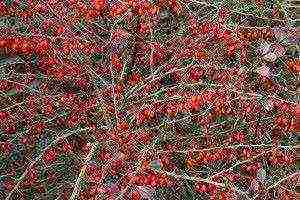
A bit of history about barberry
In the monasteries of Tibet, which are prized for their deep knowledge, barberry was considered a medicinal plant that can prolong youth and effectively treat thousands of different diseases. The plant is valued as the main means of achieving active and long-term longevity.
The roots and fruits of this "tree" in the middle of the century were used in the treatment of various diseases, especially for jaundice, scurvy and other diseases of the internal organs.
In addition to the appetizing appearance, the fruits of this shrub have great healing power, and this was known in ancient Babylon and India. In the Assyrian library of King Ashurbanipal, in records on clay tablets, which were made 600 years before the present day, the berry of this bush is characterized as a means that can rejuvenate and purify the blood. This "tree" was grown and cherished in Ancient Greece and Rome. There barberry sprouted in every garden, people thought that he was able to bring happiness and good luck.
In the days of Ancient Russia, they also knew about its healing properties. It was grown in pharmaceutical cities that have been famous in Russia since 1612 and built them by order of Alexei Mikhailovich.
It has been revered since ancient times, and various parts have been used as a healing agent for a reason.
Plant properties
The berry has a slightly sour taste, and its fruits are used to enhance the taste of various dishes and sweet pastries. It is used to prepare: liqueur, candied fruit, wine, jam, liqueur, tincture, compote, marmalade, jam and juice. Its berries are consumed fresh, they are able to quench thirst and awaken appetite. It is also a good seasoning for meat.
Nowadays, studies have shown that fruits contain a lot of ascorbic and malic acid, and they are very rich in vitamins. The juice has several properties: antipyretic, hemostatic, antimicrobial, diaphoretic and astringent. Fresh fruits, tinctures, extracts and infusions, are used during liver disease, kidney stone disease, inflammation of the kidneys, bladder, gout and rheumatism. Its berries contain a large amount of substances that interfere with the oxidation process and can remove toxins from the body, also cleanse the body, slow down the aging process, normalize damaged cells and create new healthy cells. For the production of vitamin tea, young leaves of barberry are used.
The leaves and berries of this "tree" contain many substances that can prevent many diseases, and its components can dissolve blood clots and restore elasticity in blood vessels. Each part of the barberry contains an alkaloid; on its extract, many drugs are developed that reduce the specific antitumor and antileukemic activity.
Medicinal infusions from the leaves are used as a remedy for the occurrence of hepatitis, hepatocholecystitis, and bile stone disease.Barberry-based preparations are able to relieve pain in the side, eliminate chronic constipation, cure cirrhosis of the liver and stomach ulcers; headaches and joint pains quickly go away. It has been proven that people who constantly ate several berries every day do not get cancer and atherosclerosis. They do not know what it means to feel unwell, sweating and shortness of breath. They have good health, vigor and love of life, regardless of their age.
Barberry tea is considered very healthy. In order to make it, you need to take two tablespoons (tea) of leaves (or 1 teaspoon of berries) and pour 500 mg, leave to infuse for half an hour. Such tea should be drunk a day no more than three times, and for two weeks, then take a break. He is good at cleansing, rejuvenating and strengthening the whole body.
Care and planting tips
Landing features
Planting barberry is carried out in an open place or in partial shade. If it is planted in the shade, then this ornamental plant will lose the color of its leaves. The neck of the root should be level with the ground. The soil mixture should contain: humus, sand, sod land - all this in a one-to-one ratio. Water after planting should be done at 10 liters for each plant. Then once a week. If the plant is young, and at this moment the dry period has come, then it needs private and abundant watering. You need to loosen to a depth of 3 cm and fight weeds. Mulching is carried out with peat in the form of a circle or wood chips immediately after planting. Obrazka consists in removing weak and poorly growing shoots every year. Old bushes need to be replanted in the spring.
Transplanting cuttings
During the transplant of one bush, you will need to dig a hole 40x40x40. Since he is not whimsical to acidic soils, he can be planted in it without fear. It is also worth preparing the soil correctly, this will be an important event, it should be nutritious and light.
Reproduction
Barberry can be propagated in 3 ways:
• a seed;
• a handle;
• a root process.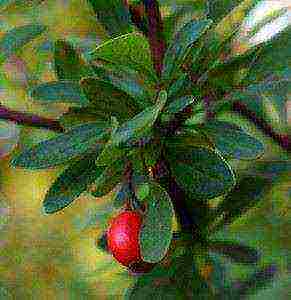
If you really want to grow barberry, then you need to collect seeds and sow them. This method of reproduction will be the most successful, provided that the climate is suitable for it. Only one plant will germinate from a pile of seeds, and sowing is best in spring, so that the seeds have time to germinate by autumn in their usual way.
It is also possible to propagate barberry with green cuttings. They need to be planted early in the spring, before the buds bloom, or in the fall, before the leaves begin to fall. Before planting, the cuttings must be well watered, and then they must be put in a bucket of water for half an hour.
Barberry varieties
Barberry has many subspecies, they all differ in the structure of the thorn, fall of leaves and color. The thorn in such a shrub can be simple, triple, or even with five emerging thorns; the thorn itself sits at the base of a bud or a short shoot of a bearing bunch of leaves.
The shrub blooms from late May to July, depending on its species. Flowers are most often fragrant, have a small size, slightly yellowish. The berry itself is purple or black, tastes sour, but good for consumption. Such a shrub is decorative and is able to stand the whole season, and at the time of leaf fall, it is especially beautiful.
Most gardeners are very fond of this shrub, carefully look after it and then sell it in different types, which are brought from different parts of the world. Each type of shrub has its own frost resistance and loves certain environmental conditions.
1. Asian barberry, a type of shrub common in Central Asia, it has dark fruits. This type of barberry practically does not freeze and bears fruit regularly. The leaves are gray-green in color, its inflorescence is paniculate and large up to 20 flowers.
2. Globular fruiting barberry, it grows in Central and Central Asia most often in nature reserves. The shrub is spreading and grows up to two meters in length, the root processes are cylindrical in shape, are red, shiny and later gray. The spines are simple and tripartite, their length reaches 2.5 cm.The leaves are oval up to 6 cm, the inflorescences are orange-yellowish in color up to 3.5 cm in length, the fruits are small, and only 1 cm long. seasonings.
3. Amur barberry, can be seen at the edge of the forest and along the banks of a mountain river, on rocky soil in Primorye, China or Japan. Its branches are small, reaching 3 meters in height, and the crown spreads widely. Shoots at a young age are yellow, a little later gray. The thorn has three separate thorns with a yellow color up to 2 cm. The leaves are simple, large and shiny in appearance, up to 10 cm long, with small denticles along the edges. In spring and summer, the color is deep green, and in autumn it is red-golden or just red. Flowers are light yellowish in color, have a pleasant and unobtrusive aroma, gather in dense inflorescences up to 25 brushes. The inflorescence lasts about 20 days, its fruits are edible and are up to 1 cm in size.
Barberry is an excellent option for decorating a summer cottage. This unpretentious plant attracts attention with its beauty at any time of the year. The bright purple color of the leaves and the scarlet hue of the berries create a favorable atmosphere for your garden, and even when the leaves fall, the shrub looks elegant. The fruits of this plant are rich in vitamins and nutrients. In addition, they are often used in cooking. Let's take a closer look at what is the procedure for growing barberry.
First, you need to decide on a site for the plant. Barberry is one of the unpretentious shrubs, but you should still take into account some of the nuances:
- The growing area should be well lit or slightly darkened;
- Sandy loam or clay soil with neutral acidity will be suitable;
- The site should not be very moist, otherwise the barberry will quickly deteriorate.
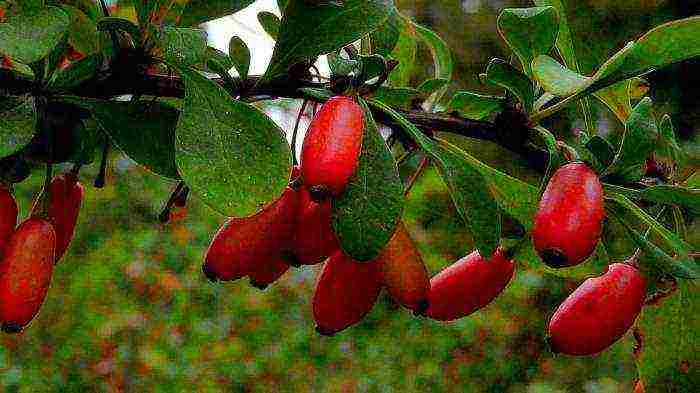
Then select the optimal plant variety. To date, the following varieties of barberry are distinguished:
- "Ordinary" - a shrub no more than one and a half meters high.
- "Amursky" - its length can reach from 2 to 4 meters.
- "Thunberg" is a more branched shrub, mainly used for ornamental purposes. Its height is usually 1.5–2 meters.
- "Ottawa" is a rare plant for our climate. It can be found in greenhouses and exhibitions. The length of such a bush can be 3 meters.
Most often, gardeners grow "common barberry". This option is ideal due to its unpretentiousness and ease of maintenance.

You can breed barberry in three ways: by seeds, layering and cuttings. The first option is considered one of the most difficult due to the preliminary preparation for sowing. For this, the grains are kept in the sand for about 2 months at a temperature of +5 degrees for their best germination. This is due to the fact that the shell of barberry seeds is very dense. Prepared grain is best planted in spring in special soil mixed with sand. The seeds of the plant remain viable for 4–5 years.
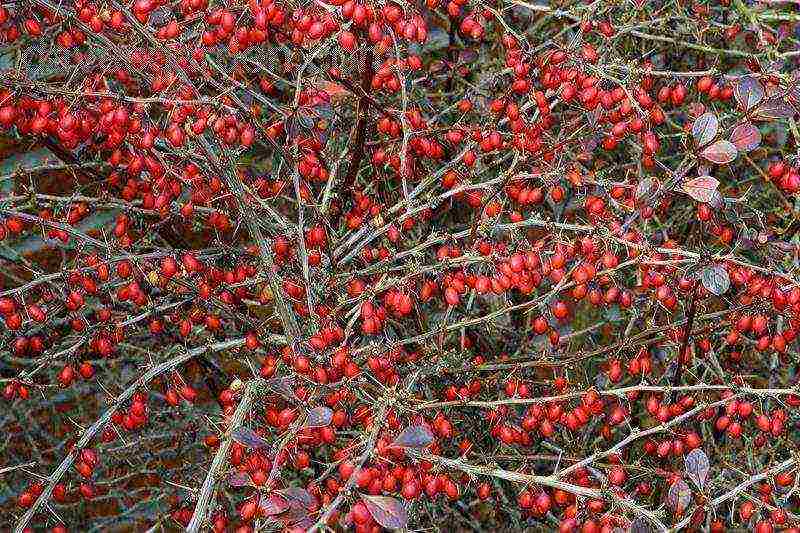
When a plant is propagated with the help of layering, it is necessary to first clean the bark of the shoot in a small area of the bush. Then the exposed part is placed in the substrate, fixing it with a wire. And at the end, you need to cut off the rooted seedling from the main plant. If you decide to grow barberry using cuttings, you will need a pre-prepared young shoot of the plant 10 cm long. As a rule, the cutting is cut in the morning. Then it is placed in soil mixed with peat and any fertilizer. From above, the seedlings are covered with a film or thin material.
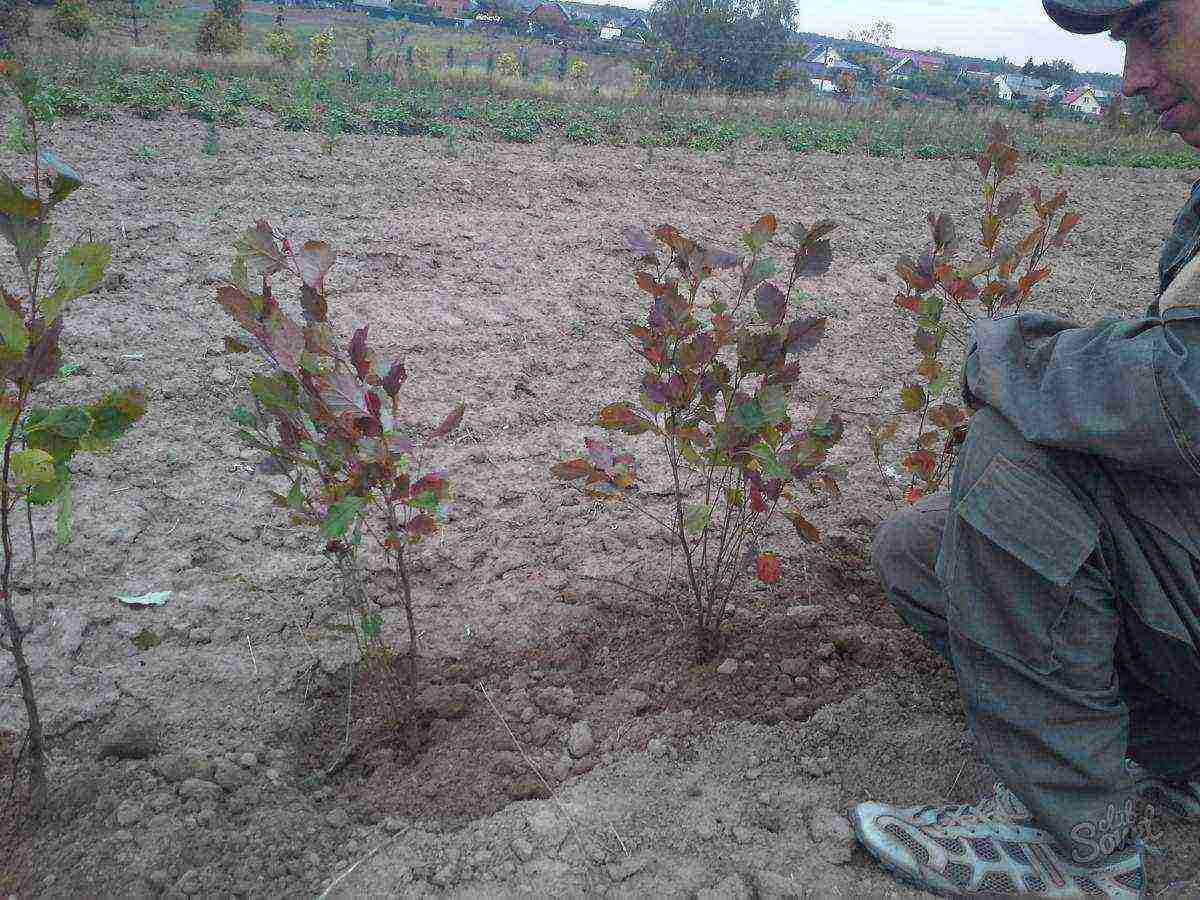
It is best to plant barberry in autumn or spring.To do this, you need to dig a hole 30–40 cm deep and about 50 cm in diameter. Then you should fill the bottom with fertilizer - manure or compost. After planting, a young bush is watered with water in moderation. For better growth, the soil around the seedlings must be sprinkled with peat or humus.
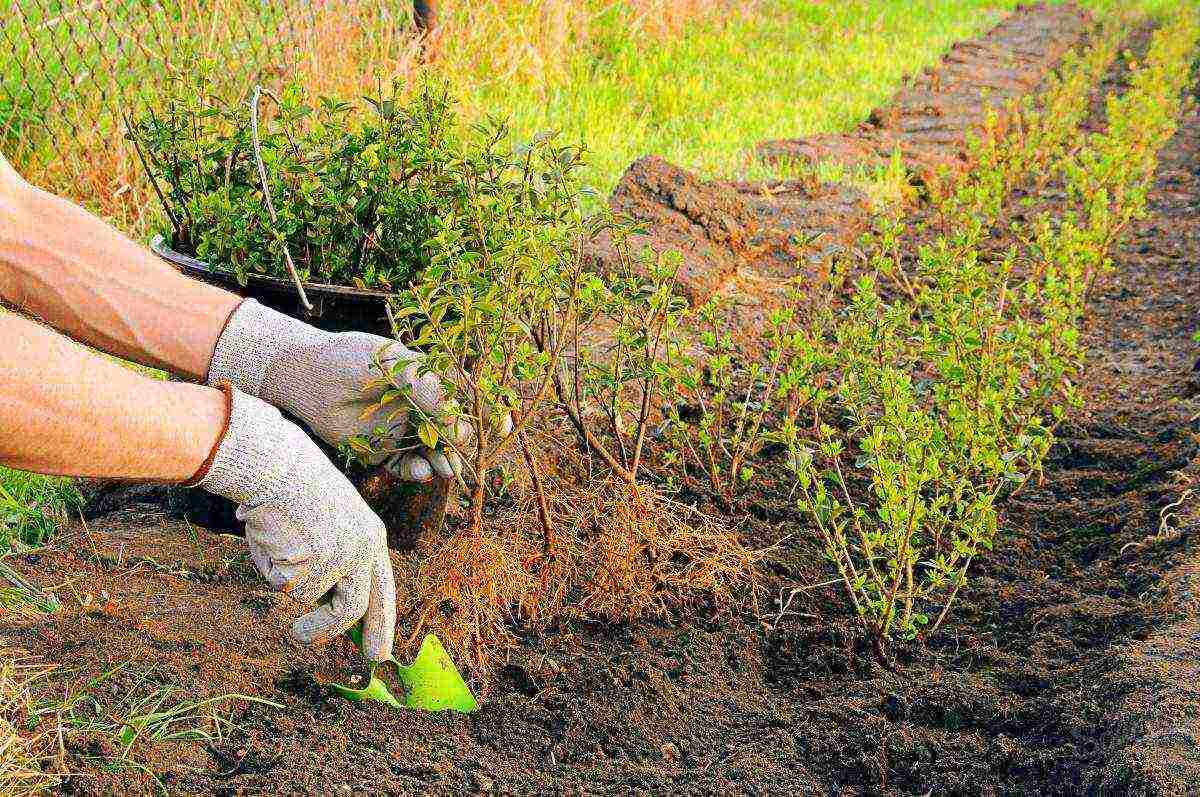
Barberry, like all plants, loves care. Therefore, the soil near it should be periodically dug up, pushed and fed with organic fertilizer. However, it is not worth pouring too much water into the bush - everything must be done in moderation. At least once every 2-3 months, you need to prune the barberry - young cuttings quickly grow in the place of old shoots.
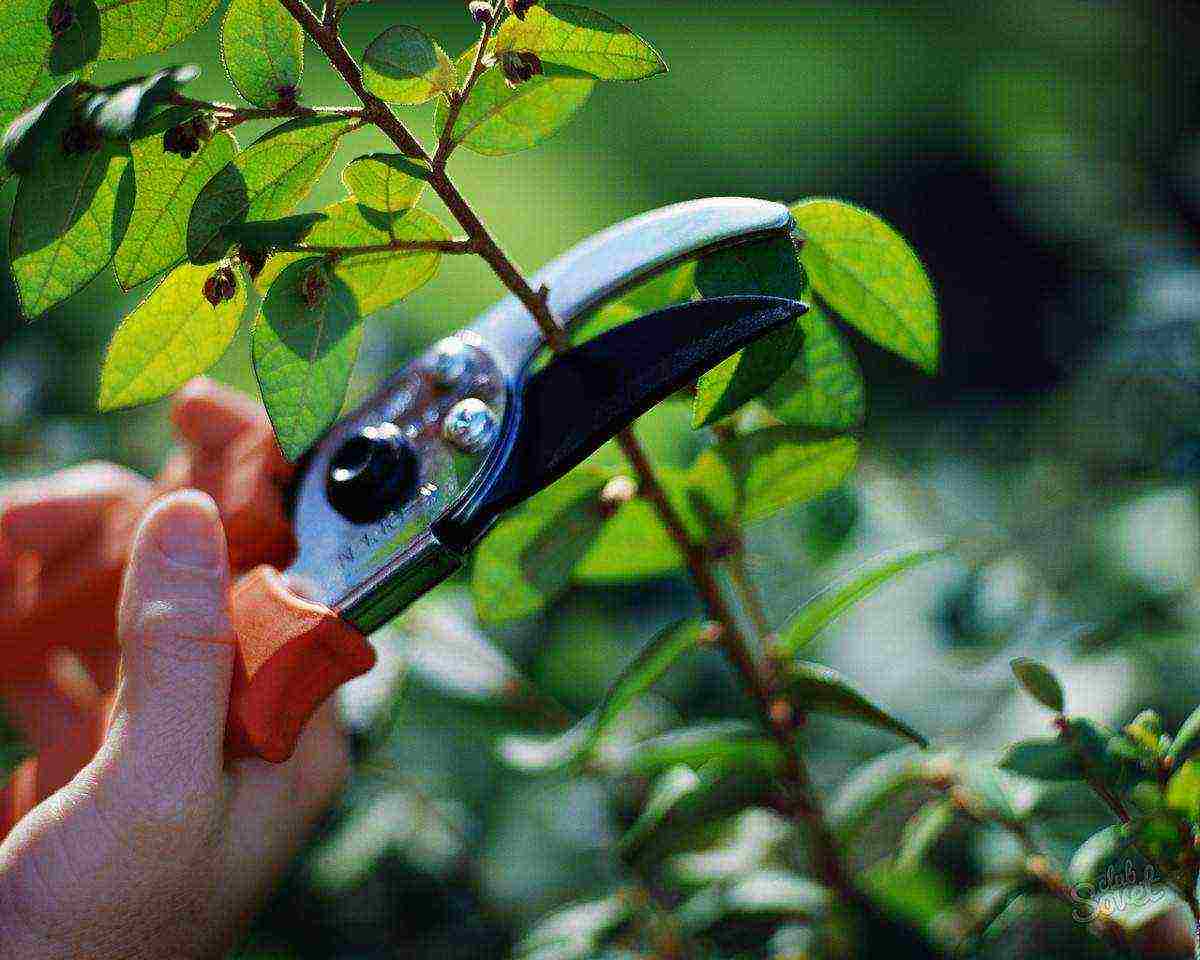
An adult plant bears tasty bright red fruits, which are actively used for home purposes. Delicious decoctions, compotes and jams with healing properties are made from barberry berries. In addition, it is often used in cooking as a condiment.
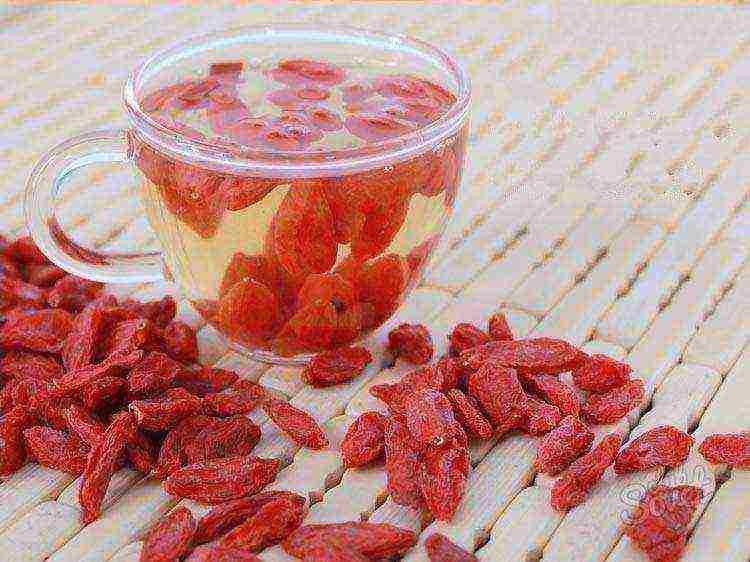
In fact, growing barberry is not difficult. If you choose the right type of plant and create the necessary care for it, the shrub will give you useful fruits in the fall.
Many of us know the taste of barberry since childhood. We all remember the barberry-flavored lollipops. And from the pictures on the candy labels, we learned in childhood that the barberry berries are red and oblong. The plant itself grows in the form of a bush or a small tree belonging to the barberry family. The berries of this bush are used not only for the manufacture of famous sweets, but also for the production of jams, preserves, marshmallows, marmalade, honey. They contain useful tartaric and citric acid. However, not only barberry berries are used, but also its rhizomes, as well as bark. They produce yellow paint. Next, we will tell you more about planting and caring for this crop.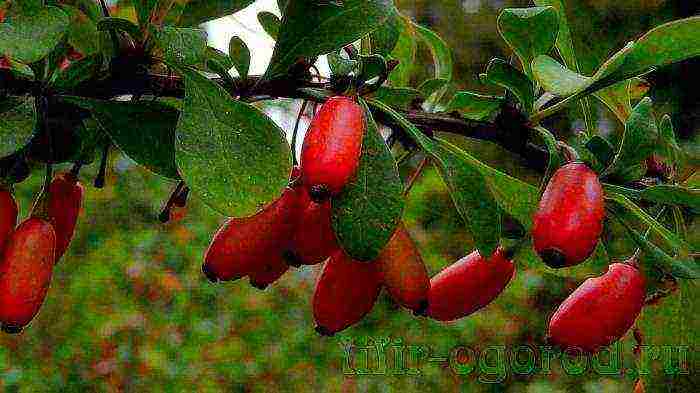
Planting barberry at home
Barberry propagates by cuttings, root suckers, dividing bushes, as well as seeds. However, growing barberry from seeds is a very lengthy process, it is much faster to propagate it vegetatively from an adult bush. If you nevertheless decide to grow barberry from seeds, then you should remember that the seed coat is very hard, so you first need to keep them in sand or peat (stratify) at a temperature of +5 degrees for 2-5 months. If you sow barberry in the fall, right after you took out the seeds from the berries, then they will undergo natural stratification in the soil. In summer, the seeds will give amicable shoots. After two true leaves appear, the planting needs to be thinned out. Seedlings will grow in one place for two years, then they must be transplanted to a permanent place.
Barberry loves a bright place in the garden, although it tolerates partial shade. However, if you plant it in the shade, then it will not bear fruit at all. For a hedge, the plant must be planted 1 meter apart, and if it is a single planting, then the distance to other plants should be at least two meters.
We advise you to read
The soil for planting barberry should be fertilized and well drained so that there is no stagnation of water, then caring for it will be easy. Before planting barberry seedlings in the fall, the earth must be dug up to a depth of 60 cm, and weeds must be cleared. For the hedge, you will need to dig a trench. First, we fill in the fertile soil layer in the planting holes, and then we apply fertilizer: organic matter, potassium salt, superphosphate. So that the roots of the seedling do not come into contact with the fertilizer, it must be well mixed with the soil. If the soil is acidic, then ash or lime must be added to the hole. Then we plant the seedling, straightening all its roots, cover it with earth and compact it well. Then we water, mulch with peat or humus and cut the shoots to 3-4 developed buds.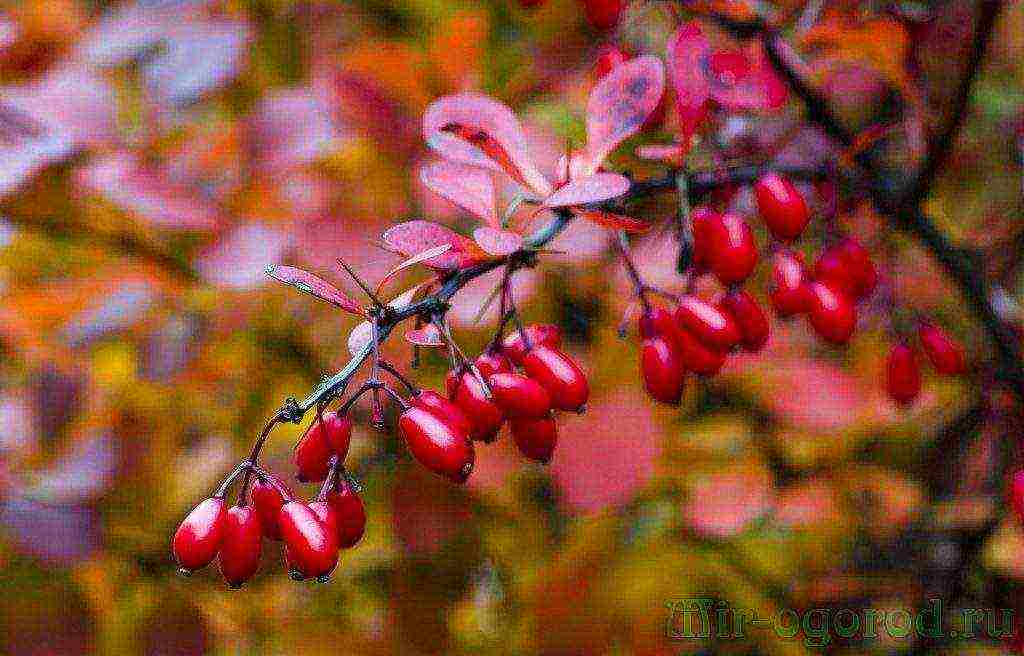
Correct propagation of barberry by cuttings
In this case, it is better to dwell on a frequently used propagation method - cut cuttings from selected healthy bushes, then root and plant them. But it must be remembered that if you do not use growth stimulants, rooting will take a very long time.
Therefore, adhering to several rules, you should do this:
- cut the cuttings about 15 cm from the side branches, approximately in June;
- remove the lower leaves before treatment with a rooting stimulant;
- plant prepared cuttings in a mixture of sand and peat;
- cover with foil;
- open the seedlings several times a day for airing and spraying, and it is also necessary to periodically loosen the soil;
- after the cuttings take root, plant them in a container with moistened soil, adding the necessary fertilizers;
- a year later, the barberry is planted in a place where it will grow.
Propagation of barberry by seeds
So, the method of growing barberry from seeds. After you collect fresh fruits, they must be squeezed through a sieve, then rinsed and dried until flowable. To get barberry from seeds, they are sown in open ground in the fall. For this, small grooves are made from 1 to 3 cm and covered with sand. It is also necessary to insulate the barberry beds - sprinkle with sawdust and cover with spruce branches.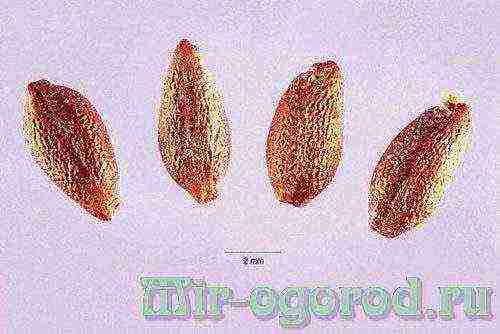
For planting, the earth is dug right in the garden, the seeds are sown in rows. The seeds have a small percentage of germination. According to statistics, no more than three out of 10 seeds will sprout, so do not be afraid to thicken the planting. Autumn seeds will sprout in spring. Seedlings need to be given time so that they grow well and get stronger. In one and a half, two years, they will make good planting material.
Articles about growing seedlings
Dividing the barberry bush for plant propagation
In your garden there is already an adult plant that looks great and annually pleases with its fruits, then you can rest assured that this particular specimen will give excellent results when dividing it into several separate bushes. This requires:
- dig a healthy, adult bush out of the ground, carefully so as not to harm the root system;
- carefully cut into pieces;
- large and powerful roots are sawn and planted in ready-made holes;
- the soil where the cuttings are planted is abundantly moistened.
 Rules for planting barberry at home
Rules for planting barberry at home
After the seedlings are grown, we proceed to planting young plants in a permanent place.
Articles about unusual growing seedlings
Barberry adapts well to any conditions and soil. But still, there are some rules for planting a plant.
- The plant cannot thrive on acidic soils. If you know for sure that the soil on your site is acidic, be sure to take measures to neutralize it. This is not difficult to do. You just need to add slaked lime to the ground.
- For planting, choose well-lit places; in poor lighting, some varieties lose their decorative color.
- When planting barberry seedlings, keep in mind that they grow in width. Leave enough room for them.
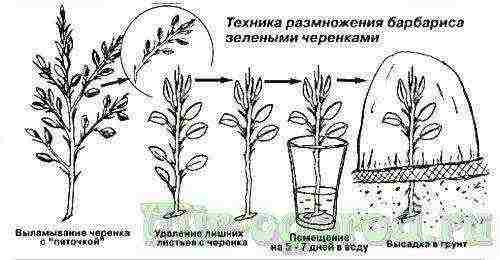 How to care for barberry at home
How to care for barberry at home
Subsequent care for mature plants is pruning and pest control. In early spring, cut off all dried, broken, growing inward branches. If the shoots are weakly branching, they are cut low, by 3 - 4 buds. We must strive to ensure that the bush retains its natural shape, therefore, after its formation, strong pruning is not recommended. The main purpose of pruning during this period is to obtain abundant flowering and fruiting.
Barberry lays flower buds on last year's shoots, which allows them to bloom early - in spring or early summer. Therefore, pruning of young shoots should be medium (5 - 8 buds), then flowering next year will be abundant.
It is necessary to start trimming the hedge the next year after planting. More than half of the aboveground part is cut off at once, such a strong pruning will contribute to the branching of the plantings.
To decorate rock gardens, planting hedges or other decorative forms, you will need strong and healthy barberry seedlings. You can purchase them at specialized stores. It's fast but expensive. For large-scale plantings, it is better to get seedlings in other ways.
Barberry
Breeding methods for barberry
1. Seeds
In the photo barberry seeds
The easiest and most affordable way. Collect well-ripened berries, remove seeds from them. Rinse in warm water or a weak solution of potassium permanganate. If the seeds are planted in the fall, they can be treated with growth regulators. If spring sowing is planned, the seeds should be kept in a cool place (it can be on the bottom shelf of the refrigerator).
Seed barberry
For planting, the earth is dug right in the garden, the seeds are sown in rows. The seeds have a small percentage of germination. According to statistics, no more than three out of 10 seeds will sprout, so do not be afraid to thicken the planting. Autumn seeds will sprout in spring. Seedlings need to be given time so that they grow well and get stronger. In one and a half, two years, they will make good planting material.
2. Cuttings
Barberry breeding technique
For cuttings, healthy annual branches are chosen, the lower part of which is already stiff. Cut into sizes from 10 to 15 cm. The bottom cut must be made at an angle. Twigs with 3-4 internodes are chosen.
Barberry cuttings
Prepared cuttings are soaked in a growth accelerator, phytohormones are used.
Shank in a jar
Planted in a mixture of sand (1 part) and peat (2 parts). Rooting takes place at home or in a greenhouse. Landings must be covered. The cuttings need constant control. They are ventilated, if necessary, watered and sprayed with water, the earth is constantly loosened. A sign that the cuttings are rooted will be the appearance of new leaves. Now the cuttings are hardened and prepared for transplantation to a permanent place.
Photo of cuttings of barberry in a pot
Barberry: propagation by cuttings
3. Layers
Barberry breeding scheme by offsets
Reproduction by layering is a method available even for beginners. Choose a shrub that is suitable for reproduction. Clean and loosen the trunk circle. Find annual, well-ligned branches. Small trenches are dug in the direction of growth of these branches. The selected branches are laid in them, they are pinned (it can be wire bent in half).
Reproduction by layering
The whole procedure is done in the spring. During the summer they water and remove the weeds. Roots will appear in the fall, new seedlings are ready. Do not rush to plant them, let them winter and get stronger.
Reproduction by layering
4. Dividing the bush
Dividing the bush
Split bush
Planting barberry
The most painful and dangerous method for the plant. The plant is dug up, cut into pieces and planted in a permanent place. If you do not divide the bush correctly, you can lose the entire plant. Leave this method as a last resort and try to get planting material in other ways.
Barberry planting rules
After the seedlings are grown, we proceed to planting young plants in a permanent place.
Barberry adapts well to any conditions and soil. But still, there are some rules for planting a plant.
- The plant cannot thrive on acidic soils. If you know for sure that the soil on your site is acidic, be sure to take measures to neutralize it. This is not difficult to do. You just need to add slaked lime to the ground.
- For planting, choose well-lit places; in poor lighting, some varieties lose their decorative color.
- When planting barberry seedlings, keep in mind that they grow in width. Leave enough room for them.
Planting and caring for barberry
Planting a single plant
To plant a single plant bought in a store, you must choose a place at a distance of no closer than two or three meters from other plants. The hole needs to be dug larger than the earthen lump of the plant itself.
Landing pit
It is advisable to prepare a nutrient composition from turf, peat, humus, taken in a ratio of 2: 1: 1. Water the seedling well, carefully remove it from the container, taking care not to damage the root system.
Place the bush in the hole
Fill with soil, compact
Water well
Add soil and water again
Examine the plant carefully, if you notice damage or decay of the roots, remove this area. If there are no special preparations, treat the cut area with a solution of potassium permanganate and dust it with activated carbon.
Important! Do not deepen the growth point when planting. This will slow down the growth, flowering, fruiting of the plant, and can lead to its death.
After planting, water the barberry well and if the weather is very hot and dry, make a small shelter. After the plant takes root, the shelter must be removed. Seedlings bought in containers take root faster and better.
Shrub barberry
If you need to plant a seedling with an open root system, spread the roots well in the hole, this will accelerate the survival of the plant. Such a seedling will require more attention, and the rooting time will be longer.
Planting a hedge
Barberry hedge
When planting seedlings for growing hedges or other ornamental plantings, two-year rooted cuttings or seedlings grown from seeds are used. For these purposes, they dig a trench of the required shape. If the soil is not fertile enough, prepare a nutrient mixture and lay it on the bottom of a trench, the width of which should be at least 45-50 cm. When planting, carefully monitor the level of burial of the plant. Remember the growth point. After planting, the plantings must be well shed with water and protected from direct sunlight.
Barberry plant care
For all its unpretentiousness, in order to grow a healthy and beautiful plant, it is necessary to organize good care. It is better to plant evergreens in partial shade, and deciduous ones where there is more light. Otherwise, the color of the leaves may change, and their beauty and attractiveness will disappear.
|
1. Watering |
Barberry is not very picky about water. You need to water the plant once every 7 to 10 days. But if the weather is very hot, watering must be increased. This is especially true for young seedlings. For adult plants, rain moisture is sufficient. There is no need to water them. Unless, of course, there is a drought. With a constant lack of moisture, the leaves will grow small and their surface will not be glossy. |
|
2. Top dressing |
If, during planting, a sufficient amount of fertile land was introduced into the hole or trench, then the plant will receive all the necessary nutrients from the soil. Top dressing will need to be done next year. In the spring, nitrogen fertilizers are applied; at the end of summer, you can feed them with complex fertilizers. Adult plants practically do not fertilize or fertilize rarely (once every 4-5 years), hedges annually. |
|
3. Cropping |
Experts distinguish between pruning and shearing of plants. Pruning is the sanitary removal of diseased, dead branches. Pruning is also necessary for a plant with strong thickening. Pruning is carried out in early spring. When the plant is not yet blooming. Young shoots are cut out, and when the bush is aging, rejuvenating pruning is carried out. In this case, on the contrary, old branches are cut out, and a new plant is formed from young shoots. Hedges are also sanitized in spring. But they cut them twice in the summer. In spring, after flowering and at the end of summer. Single plants, if desired, to give them a decorative or geometric shape, are also sheared.Young plantings are given shape in the second year after planting. |
Diseases and pests
Compared to other ornamental plants, barberry is less susceptible to disease. Under unfavorable conditions, it is affected by fungal diseases.
1. Powdery mildew.
Powdery mildew
The causative agent of the disease is a fungus of the genus microsphere. Mushrooms of this species infect only one plant - barberry. The disease develops, gradually affecting the leaves, then spreads to the stems. Sick plants are, as it were, "dusted with flour." A mealy bloom is visible on both sides of the leaf. Formed and matured spores remain on the plant throughout the winter. In the spring, the infection of the plant will continue.
2. Rust.
Rusty barberry leaf
If in the spring, when examining the plant, you notice orange spots on the young leaves, turn the leaf over and look from the back side. Is the leaf affected by bulges? Your plant has become a shelter for rust fungus. And convex growths are repositories of hundreds and thousands of spores, which are ready to infect both cultivated and wild-growing cereals. However, mushrooms use barberry not only as an intermediate host, but also harm the plant itself. With a strong infection, the plant may die.
3. Spotting.
Spotting
Different pathogens can cause spotting. By hitting the plant, they weaken it. Disrupt vital processes. Diseased plants cannot prepare well enough for winter. Young seedlings may die, adult plants freeze too much. Signs of the disease are spots of various shapes and sizes, drying of young growth.
4. Plant wilting... Fungi, the causative agents of this disease, are found in the contaminated land. Through the roots of the plant, they enter the branches and leaves, thus affecting the entire plant. The virus is very insidious. Causes decay of roots, wilting of leaves, death of young shoots. An infected plant is very difficult to save.
5. Drying of shoots... The causative agents of the disease affect the bark of plants. Spores, getting on a plant, penetrate under the bark and develop rapidly to form whole colonies. The plant begins to dry out. If sanitary pruning is carried out in time, barberry can be saved.
6. Bacteriosis... It is also called plant cancer. When infected with this dangerous virus, the plant becomes covered with cracks, growths. Affected leaves, petioles, young shoots are covered with brown spots. Leaves die off quickly. For unknown reasons, the disease does not affect the flowers and berries of the barberry.
Diseases of barberry
Of the pests, the most dangerous are the barberry aphid and the flower moth. The barberry aphid can spread very quickly on the plant. Sucking the juice from the leaves and young shoots, it leads to their death. The flower moth larvae devour the berries of the barberry.
Flower moth
Complex preparations are used to combat diseases and pests. Processing is carried out as needed 1 - 3 times per season.
Important! Timely preventive measures taken will help get rid of problems with diseases and pests.
In addition to processing with special preparations, it is necessary to regularly fight weeds, in the fall to remove and destroy fallen leaves, to inspect and sanitize plants in a timely manner, then your barberries will only bring you joy.
Barberry Thunberg
Barberry Maria
Barberry Orange Rocket
Barberry golden
Video - Planting barberry
Video - Features of the tunberg barberry. Barberry care
